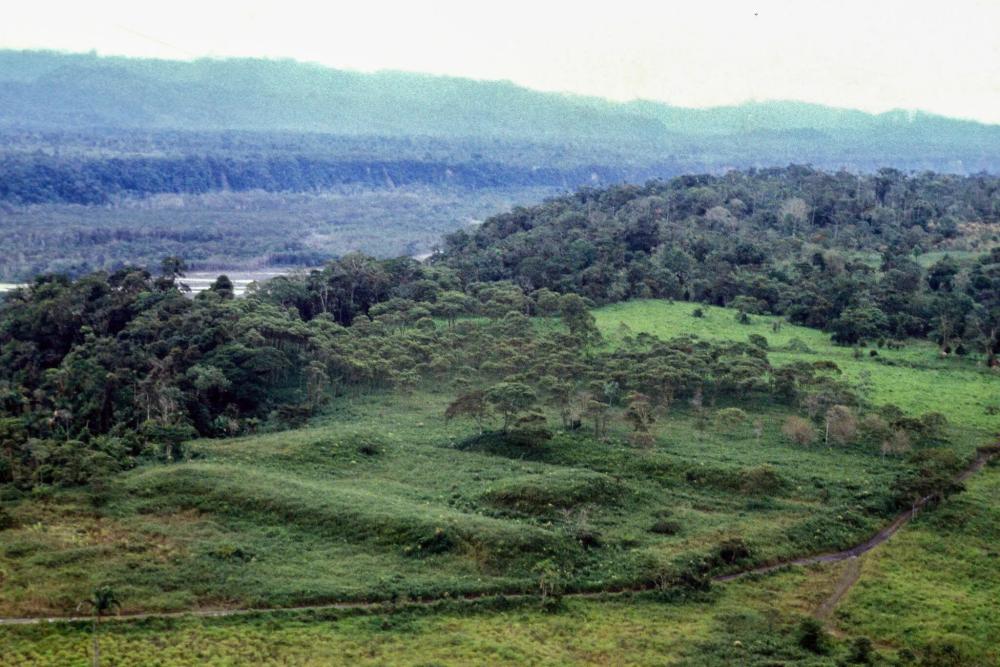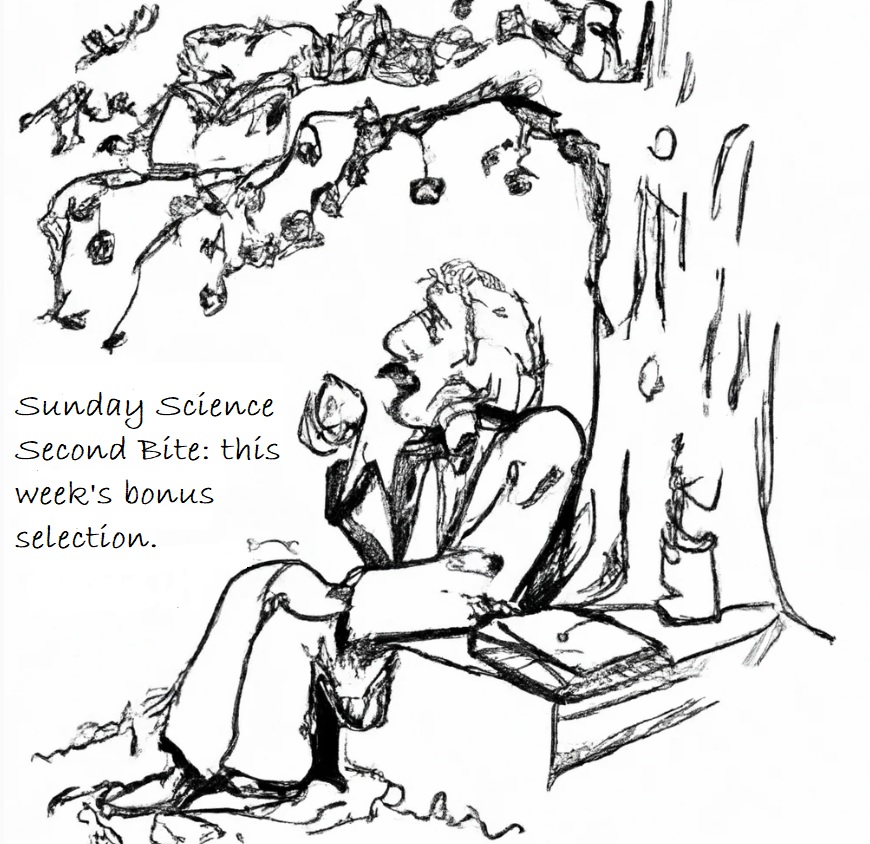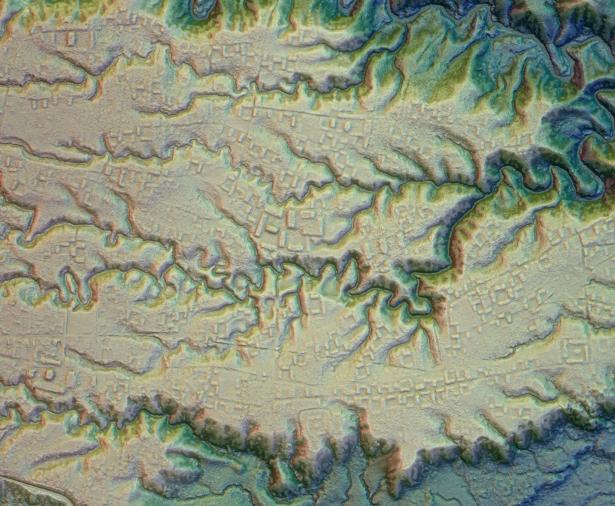The Amazon valley looked like so many others, with a muddy river snaking through dense forest, except that this one had earthen mounds rising at clear right angles and ditches carving long straight lines through the soil.
In this rainforest, archaeologists say, lay the bones of sprawling ancient cities: earthworks that were once roads, canals, plazas and platforms for homes where thousands of people had lived for centuries, long before Europeans ever tried to chart South America.
The cluster of interconnected cities was only recently mapped in the Upano Valley of eastern Ecuador, a research team reported this month in the journal Science, working off decades of research and laser-mapping technology that has helped to revolutionize archaeology.
With the technology, called lidar, researchers were able to pierce the forest cover and map the ground below it, documenting five major settlements and 10 secondary sites across more than 115 square miles.
Radiocarbon dating found that people lived there from around 500 B.C. to between A.D. 300 and A.D. 600, which would make the settlements some of the oldest found so far in the diverse landscapes of the Amazon.
“It’s a huge contribution to Amazonian archaeology,” said José Iriarte, an archaeologist at the University of Exeter who was not involved in the research.
This region, where the Amazon reaches the eastern slope of the Andes, had long been thought of as an area “with nothing really happening there,” he said.
Now, he said, “we have this major, idiosyncratic cultural development.”
Stéphen Rostain, the lead researcher of the study, said he was impressed by the complexity of the cities and the amount of work needed to build them.
The “perfectly straight roads” that connected them were one sign of the cities’ sophistication, he said, adding that they would have required engineers and workers, farmers to provide food, and some sort of chairman, chief or king to lead “a specialized and stratified society.”

A complex of rectangular earthen platforms at the Nijiamanch site along the cliff edge of the Upano River in Ecuador. Credit...Stéphen Rostain
The original construction was done by groups from the Kilamope, and later, Upano cultures, the researchers said, adding that people of the Huapula culture lived in the area between 800 and 1200.
The team excavated artifacts, including painted pottery and jugs with the remains of traditional chicha, the corn-based drink that remains a mainstay of the Andes region today.
Though archaeologists have long known about earthworks in the area, lidar — which pierces foliage with laser pulses from airplanes and has helped find hidden Mayan sites and ancient Cambodian cities — revealed the scope of the settlements.
They eventually mapped more than 6,000 earthen platforms, connected by roads and laid across a landscape molded to control water and cultivate crops.
The researchers determined that some of the earthen mounds were residential platforms, and said in the paper that other, larger complexes might have served a “civic-ceremonial function.”
Particularly striking, archaeologists said, were the systems of roads and farming — how ancient people drained away the heavy rains along the Andes’ eastern slopes to take advantage of fertile volcanic soil.
“It really shows us that there are many more ways of living in the Amazon in the past than we used to consider in archaeology,” said Eduardo Neves, an archaeologist at the University of São Paulo who was not on the team.
He said that the research added to the growing evidence that the Amazon was “settled densely by Indigenous people for millennia, in very large settlements.”
The new paper also builds on research showing the extent to which ancient people transformed their landscapes, archaeologists said.
“This idea of a kind of pristine, untouched Amazonian landscape was definitely not the case,” said Jason Nesbitt, an archaeologist at Tulane University.
That longstanding notion, the archaeologists said, was fueled in part by how the Indigenous population was decimated by the arrival of Europeans, and by the raw materials of Amazonia. Ancient people there did not have huge quantities of stone to work with, like the monument-builders of Mesoamerica or Peru, and instead used the soil at hand.
Agricultural modifications in parts of the Amazon, said Simon Martin, an anthropologist at the Penn Museum in Philadelphia, have “long pointed to major populations there in the past.”
Amazonia remains “the one vast location where hidden archaeological wonders could yet lie,” he said.
Dr. Nesbitt added that, although it was difficult to estimate the population of an ancient settlement, the researchers’ suggestion that, at one point, as many as 30,000 people may have lived in the Upano Valley seemed reasonable.
“It’s a very exciting time to do archaeology in the Amazon because of the use of lidar,” Dr. Neves added. “Places which were already known are being restudied, and places that were not known are being mapped for the first time.”
The archaeologists expressed hope that more excavation would be done in the valley and that the work could help to answer many of the outstanding questions about the people who lived there, including their beliefs, their system of governance and what connections to other societies they may have had.
“We have a lot to learn from the human past,” Dr. Rostain said, adding the scale and complexity of the cities showed that its inhabitants were more than “hunter-gatherers lost in the rainforest looking for food.”
Dr. Neves added that continued research could help protect the Amazon from the threat of deforestation.
“Some of the destruction is based on the idea that the Amazon has never been really settled in the past, that there were never many people there, that it’s kind of up for grabs,” he said. “I think this kind of work, archaeology in general, and this kind of research, is really important because it adds to the evidence showing the Amazon wasn’t an empty place.”
Alan Yuhas is a Senior staff editor at The New York Times, formerly at The Guardian. He is a graduate of Amherst College, Magna cum laude.
Jesus Jiménez is a general assignment reporter for The New York Times. He previously reported for The Dallas Morning News, where he covered weather and breaking news. He is a graduate of the University of Texas at Dallas.
The New York Times is a national daily newspaper based in New York City. A newspaper of record, it is the second-largest newspaper by print circulation and one of the longest-running newspapers in the United States. Subscribe to the New York Times.

What You Don’t Know About Sperm
A remarkable tale of evolution.
By David P. Barash
Nautilus
January 3, 2024


Spread the word